Soaring Above: The Role of Flight Simulators in Pilot Training
Flight simulators have revolutionized the way pilots train, offering a blend of safety, efficiency, and effectiveness that’s hard to beat. They’ve become an essential tool in the pilot training toolkit, giving students the chance to practice and perfect their skills without ever having to leave the ground. Whether you’re just starting out or you’re looking to polish your skills, flight simulators provide a world of opportunities to learn and grow as a pilot.
Key Takeaways
- Flight simulators are a critical component of modern pilot training, offering a risk-free environment to learn.
- They allow for the practice of both basic maneuvers and complex procedures without the cost of real flight hours.
- Simulators come in various forms, from simple desktop trainers to full-motion, advanced devices.
- While flight simulators are invaluable, they are not a complete substitute for real-world flying experience.
- Using simulators can significantly reduce training costs and help manage risks associated with flight training.
Realistic Training without Leaving the Ground
Imagine being able to fly through turbulent weather, navigate complex airspaces, and handle emergency situations all while sitting comfortably in a classroom. That’s the power of flight simulators. They mimic the experience of flying a real aircraft, giving you the visuals, the controls, and the feedback you need to learn effectively. This isn’t just playing a video game; it’s a sophisticated form of training that’s recognized and valued across the aviation industry.
One of the greatest benefits of using a simulator is the ability to pause, discuss, and repeat maneuvers until they’re second nature. You can fly the same approach a dozen times in an hour, something that would be impractical and incredibly expensive in a real aircraft. And if you make a mistake? No problem. There’s no risk of harm, so you can learn from the error and try again immediately.
Simulators are especially useful for instrument training. They allow you to focus on reading and interpreting your instruments without the distraction of actual flight. This helps build a solid foundation of skills that you’ll rely on when flying in poor visibility or challenging weather conditions.
Types of Flight Simulators Used in Training Programs
Not all flight simulators are created equal. There’s a range of technology available, from basic desktop trainers to sophisticated full-motion simulators that replicate the movement of an aircraft in flight. Desktop simulators are a cost-effective option for learning the basics, while full-motion simulators provide the most immersive experience possible, short of flying an actual plane.
Here’s a closer look at the types of simulators you might encounter:
- Basic Aviation Training Devices (BATD): These are often used for initial training and procedural practice.
- Advanced Aviation Training Devices (AATD): Offering a more immersive experience, these are used for more advanced training, including instrument and multi-engine time.
- Full Flight Simulators (FFS): These top-of-the-line simulators offer the most realistic experience, including motion, and are used by airlines and professional flight schools.
Choosing the right simulator depends on your training goals, budget, and the stage of your pilot training. But no matter which type you use, the benefits of simulator training are clear. You can practice flying in all sorts of conditions, learn to deal with emergencies in a controlled environment, and get a feel for different types of aircraft before you ever set foot in a cockpit.
Building Blocks of Virtual Flight Training
Flight simulation isn’t just about getting a feel for the controls; it’s about building a comprehensive understanding of flying. Simulators provide a structured environment where you can focus on one aspect of flying at a time, mastering each before moving on to the next. This methodical approach is crucial for developing the skills and confidence you need to be a competent pilot.
For beginners, simulators are a godsend. They allow you to get comfortable with the aircraft’s controls and instruments without the pressure of actual flight. You can take your time getting to know the throttle, yoke, rudder pedals, and gauges. It’s like having a practice run before the real test.
But it’s not just about the hardware. Simulators also teach you the software of flying – the procedures, the regulations, and the decision-making process that are all part of being a pilot. You can practice flight plans, go through checklists, and learn to communicate with air traffic control in a realistic setting. And the best part? You can do it all at your own pace.
The Fundamentals: From Instruments to Aerodynamics
Mastering the basics is the first step in any pilot’s journey. Simulators provide an unparalleled platform for understanding the core principles of flight. From the instrument panel layout to the physics of aerodynamics, simulators allow you to digest complex information in a digestible way. They bridge the gap between theoretical knowledge and practical application, ensuring that when you’re ready to take to the skies, you’re fully prepared.
- Understanding Flight Instruments: Learn to interpret the altimeter, attitude indicator, airspeed indicator, and more.
- Navigation: Practice using VORs, GPS, and other navigational aids to find your way through the virtual skies.
- Engine Management: Get to know how to manage power settings and the effects of different configurations on flight dynamics.
- Weather Interpretation: Simulators can mimic a variety of weather conditions, teaching you how to adapt and react as needed.
- Aerodynamics: Grasp the principles of lift, drag, thrust, and weight, and see how they interact in real-time.
- Emergency Procedures: Learn and practice the correct responses to common in-flight emergencies.
By breaking down each fundamental aspect into manageable chunks, simulators help build a strong foundation of knowledge and skills. This foundation is crucial for safe and confident flying in the real world.
Procedure Practice: Repetition to Perfection
Procedures are the backbone of safe aviation. They ensure that every flight follows a consistent, tried-and-tested pattern that maximizes safety and efficiency. Simulators are the perfect environment to drill these procedures until they become second nature. You can practice takeoffs, landings, and emergency protocols repeatedly, without the time constraints and costs associated with actual flight time.
“The more you sweat in training, the less you bleed in battle.” This adage is especially true in aviation, where rigorous practice in a simulator can prevent real-world incidents.
Simulators also allow for scenario-based training, which is invaluable for developing decision-making skills. You can be presented with a variety of flight scenarios, from engine failures to instrument malfunctions, and learn to navigate them safely. This type of training ensures that when you’re faced with these situations for real, you’ll handle them with confidence.
And it’s not just about handling the unexpected. Routine procedures, like radio communication and traffic pattern operations, are also perfected within the virtual cockpit. This comprehensive approach to practice ensures that when you do fly, you’re not just capable, but proficient.
Advantage Simulator: Reducing Costs and Risks
Cost-Effectiveness: Training on a Budget
Let’s talk numbers. Flying is not cheap, and the costs of fuel, aircraft rental, and maintenance can add up quickly. Simulators offer a cost-effective alternative to rack up training hours without breaking the bank. They provide an affordable means to practice maneuvers and procedures as many times as needed, without the additional costs of actual flight.
- No fuel costs: You can “fly” for hours without spending a penny on gas.
- Aircraft wear and tear: Simulators don’t require maintenance like real aircraft, saving you money on upkeep.
- Insurance: The cost of insuring a simulator is significantly less than insuring an aircraft for training purposes.
- Rental fees: Renting simulator time is generally more affordable than renting an aircraft.
For flight schools and individual students alike, the financial benefits of simulator training are clear. It’s an investment in your education that pays off by providing extensive, hands-on experience at a fraction of the cost of actual flight time.
Risk Management: Safe Learning Environment
Flight training carries inherent risks. Every takeoff, maneuver, and landing has the potential for something to go wrong. Simulators eliminate these risks, providing a safe space to learn and make mistakes. There’s no risk of a real crash, no bad weather to contend with, and no mechanical failures that put you in danger. This safety net allows you to push your limits and learn from errors without fear of real-world consequences.
In the simulator, you can experience engine failures, system malfunctions, and other emergencies in a controlled environment. This exposure is invaluable. It builds a level of preparedness that simply can’t be achieved through textbooks or classroom discussion. When faced with high-pressure situations in an actual aircraft, you’ll have the confidence and calmness that come from having “been there, done that” in the simulator.
Ultimately, simulators are about more than just learning to fly; they’re about learning to fly safely. By reducing the costs and risks associated with flight training, they make the dream of becoming a pilot accessible and achievable for more people than ever before.
Limitations and Complementing Real Flight Experience
While flight simulators are an incredible tool for training, it’s important to recognize they are not a complete replacement for flying a real aircraft. Simulators can’t replicate every aspect of flight, and there are some experiences that can only be gained through actual flight time. Understanding the limitations of simulators helps ensure that they are used effectively, complementing real-world experience rather than trying to replace it.
What Simulators Can Teach You
Simulators are adept at teaching a wide range of skills and concepts that are fundamental to flying:
- Instrument proficiency: You’ll learn to trust and interpret your instruments, which is crucial for IFR (Instrument Flight Rules) flying.
- Procedural training: From startup to shutdown, you can practice every step in a flight procedure.
- Emergency responses: Simulators allow you to rehearse your reaction to emergencies without real-world stakes.
- System failures: You can experience failures of various aircraft systems and learn how to diagnose and respond to them.
- Weather conditions: You can fly in virtual fog, rain, snow, or wind to understand how weather affects aircraft handling.
Simulators provide a solid foundation of skills and knowledge, but they are best viewed as part of a comprehensive training regimen that includes actual flight experience.
Knowing the Boundaries: The Gap Between Simulation and Reality
Understanding where simulators fall short is key to a well-rounded training program. The physical sensations of flight, such as the feeling of acceleration, turbulence, and spatial orientation, are not fully replicated in a simulator. The psychological pressure of being in an actual aircraft, with real consequences for your actions, also can’t be perfectly mimicked.
Here are some of the differences between simulators and real-life flying:
- Feedback: The tactile feedback from the aircraft controls and the seat-of-the-pants sensations are more nuanced in an actual aircraft.
- Stress: Real-world flying involves managing stress and decision-making under pressure, which can be more intense than in a simulator.
- Environmental factors: While simulators can simulate weather conditions, they can’t fully replicate the unpredictability of real-world weather.
For these reasons, while simulators are an essential part of training, they are complemented by actual flight hours to ensure a pilot is fully prepared for all aspects of flying.
Advancing Your Skills: From Simulation to Aviation Career
Using simulators is just one step on the journey to a career in aviation. They provide a strong foundation, but advancing your skills requires a combination of simulator training and real-world flying. As you progress, you’ll learn how to transfer the skills acquired in the simulator to the cockpit of an actual aircraft.
Transitioning to the Cockpit: Applying Simulator Training
Moving from a simulator to an actual cockpit can be a thrilling step. The skills you’ve honed virtually become second nature, and you’ll find yourself automatically checking instruments, running through checklists, and communicating with air traffic control as you’ve practiced. Here’s how to make the transition smooth:
- Start with familiar scenarios: Begin your real-world flying with procedures and flight patterns you’ve practiced extensively in the simulator.
- Gradually introduce new challenges: As you become more comfortable, start to explore more complex flying situations.
- Reflect on your simulator training: Use your time in the air to think about how the simulator experience compares, noting any differences and adjustments you need to make.
Remember, the goal of simulator training is not just to mimic real-world flying but to enhance it. By the time you’re in the cockpit, you’ll be equipped with a robust set of skills that make you a safer, more competent pilot.
As you continue to gain real-world experience, keep using the simulator to refine your skills, explore new aircraft, and stay sharp on procedures. It’s a resource that can support your growth throughout your aviation career.
Ultimately, the journey from simulation to the skies is a rewarding one. With each step, you’ll build confidence, competence, and a deep love for flying that will serve you throughout your career in aviation.
Continuous Learning: Simulator Role in Ongoing Pilot Development
The journey of a pilot is one of constant learning and improvement. Even after earning your wings, simulators play a crucial role in maintaining and enhancing your skills. They are an invaluable resource for experienced pilots to stay current with procedures, experiment with new technology, and prepare for certification renewals or upgrades.
Here’s how simulators support continuous learning:
- Staying Current: Regular simulator sessions help keep your skills sharp, especially if you’re not flying regularly.
- Upgrading Skills: Simulators allow you to train on different aircraft models and systems, broadening your flying capabilities.
- Mastering New Tech: As avionics evolve, simulators offer a way to become proficient with the latest technology without the pressure of learning in-flight.
- Preparing for Checkrides: Use simulators to prepare for practical exams, ensuring you’re well-practiced and confident.
By integrating simulator training into your ongoing development, you ensure that you’re not just keeping up with the demands of aviation but exceeding them. It’s an approach that keeps safety at the forefront and ensures you’re always ready for the next challenge.
FAQs
Can I log flight simulator hours as actual flight time?
While simulator hours are incredibly valuable, they are not the same as actual flight time. However, you can log them for training and currency purposes under specific conditions. The Federal Aviation Administration (FAA) and other regulatory bodies have guidelines on how simulator time can be used towards training requirements and ratings.
“Always check with your instructor and the relevant aviation authority to understand how your simulator hours can count towards your training goals.”
For example, certain simulators approved by the FAA can be used to log instrument experience or even a portion of the hours needed for a pilot’s license. The key is to ensure the simulator meets the necessary standards and that you’re using it as part of an approved training program.
What certifications can I acquire using flight simulators?
Flight simulators can be used to acquire a range of certifications, depending on the level of the simulator and the structure of the training program. Here are some certifications and ratings you might work on using a simulator:
- Instrument Rating: A significant portion of the required instrument training hours can be completed in a simulator.
- Commercial Pilot License: Some of the training hours may be completed in advanced simulators.
- ATP Certification: Airline Transport Pilot certification can also include simulator time.
- Type Ratings: For specific aircraft, much of the initial training can be conducted in full flight simulators.
It’s important to work with your flight school and instructors to understand how simulator training integrates into your certification path. They’ll guide you on how to use simulator time effectively to meet the requirements of your desired certifications.
How do flight simulators contribute to emergency training?
Simulators are perhaps most valuable when it comes to preparing for emergencies. They allow pilots to experience critical situations in a controlled environment, where they can learn to react correctly without the risk of real-world consequences.
Here’s how simulators enhance emergency training:
- Engine Failures: Practice identifying and responding to engine trouble, from troubleshooting to securing the engine.
- System Malfunctions: Learn to diagnose and manage failures in electrical, hydraulic, and other critical systems.
- Weather Challenges: Simulate flying through severe weather and practice contingency plans.
- Abnormal Procedures: Train for rare but serious situations like cabin depressurization or onboard fires.
By repeatedly practicing these scenarios, pilots develop muscle memory and decision-making skills that can save lives in an actual emergency. It’s an aspect of training that underscores the importance of simulators in creating competent, prepared pilots ready for anything the skies might throw their way.
Are home flight simulators effective for professional pilot training?
Home flight simulators have come a long way, with advanced graphics and realistic controls that can mirror the experience of flying a real plane. But can they replace the sophisticated simulators used by professional flight schools? The answer is a bit nuanced. While home simulators can’t fully replicate the advanced motion and feedback systems of professional-grade simulators, they are still a valuable tool for practice and learning.
For aspiring pilots, home simulators are a great way to reinforce lessons learned during formal training. They can be used to practice procedures, familiarize yourself with different aircraft layouts, and maintain proficiency in instrument flying. They also provide a platform to explore and understand the principles of flight dynamics and navigation at your own pace, which is a huge advantage.
However, it’s crucial to remember that home simulators are an adjunct to, not a replacement for, professional training. They are best used as a supplement to formal instruction, helping to solidify the skills and knowledge acquired during your flight training.
Do airlines use flight simulators for training their pilots?
Airlines around the world rely heavily on flight simulators for pilot training. These simulators are sophisticated pieces of technology that can replicate the flying experience of specific aircraft models to an astonishing degree of accuracy. They are used for initial pilot training, recurrent training, and to help pilots transition to new aircraft types.
Airlines use simulators to train pilots on standard operating procedures, emergency operations, and to test their skills in handling rare but critical situations that cannot be safely replicated in an actual aircraft. The use of simulators is an industry standard and is part of the rigorous training and certification process that all airline pilots must go through.
With the ability to simulate a wide range of weather conditions, system failures, and other operational challenges, simulators provide an environment where pilots can learn and make mistakes without any real-world consequences. This kind of training is invaluable and helps ensure that when pilots are in the cockpit, they are well-prepared for any situation they might encounter.
In conclusion, flight simulators are a cornerstone of modern pilot training, offering a safe, cost-effective, and comprehensive tool for learning and perfecting flying skills. They provide a controlled environment to practice maneuvers, understand aircraft systems, and prepare for emergencies, which is essential for any pilot’s education.
While simulators are not a complete substitute for actual flight experience, they are an indispensable part of the training process. They allow for the repetition and practice necessary to build confidence and proficiency, and they help manage the risks and costs associated with learning to fly.
As technology continues to advance, the line between simulator training and real-world flying will likely become even more blurred. But one thing remains clear: the use of simulators in pilot training is here to stay. They are a powerful tool that, when used correctly, can help any aspiring pilot reach new heights and achieve their dreams of a career in aviation.
Whether you’re just starting out or you’re a seasoned pilot looking to stay sharp, embracing the power of simulation is a smart move. It’s an investment in your skills, your safety, and your future as a pilot. So buckle up, take the controls, and prepare for takeoff – your aviation journey is just getting started, and the sky’s the limit.
FAQs
Can I use a home flight simulator for actual flight training?
Home flight simulators can be used to supplement actual flight training, but they are not a substitute for it. They can help reinforce what you’ve learned in flight school and allow you to practice procedures and instrument flying. However, the hours logged on a home simulator typically cannot be counted towards the flight hours required for certification.
How accurate are flight simulators compared to real flying?
Professional-grade flight simulators are highly accurate and can replicate the experience of flying to a high degree of realism. They are designed to mimic the controls, responses, and sensations of actual aircraft. Home simulators may not offer the same level of realism, especially in terms of motion and tactile feedback, but they are still useful for learning and practice.
What skills can I develop using a flight simulator?
Flight simulators allow you to develop a wide range of skills, including:
Can simulators replicate all types of weather conditions?
Yes, advanced flight simulators can simulate a wide range of weather conditions, including wind, rain, snow, fog, and turbulence. This allows pilots to practice flying in adverse weather and learn how to handle various meteorological challenges.
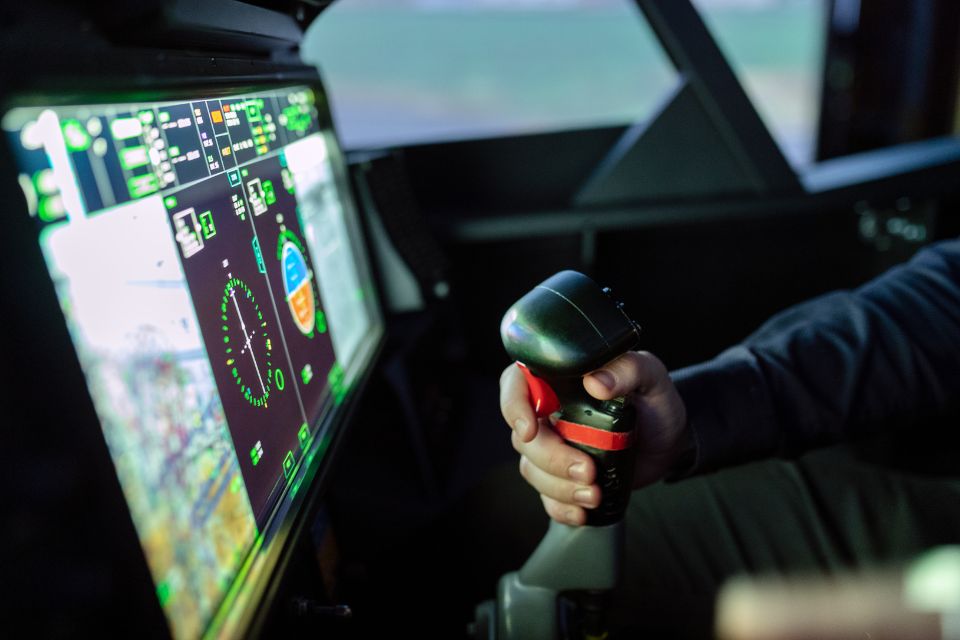

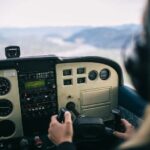
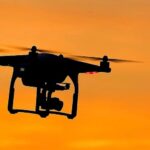
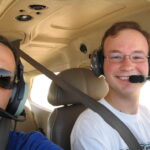
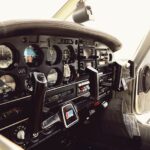
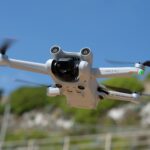
Leave a Reply